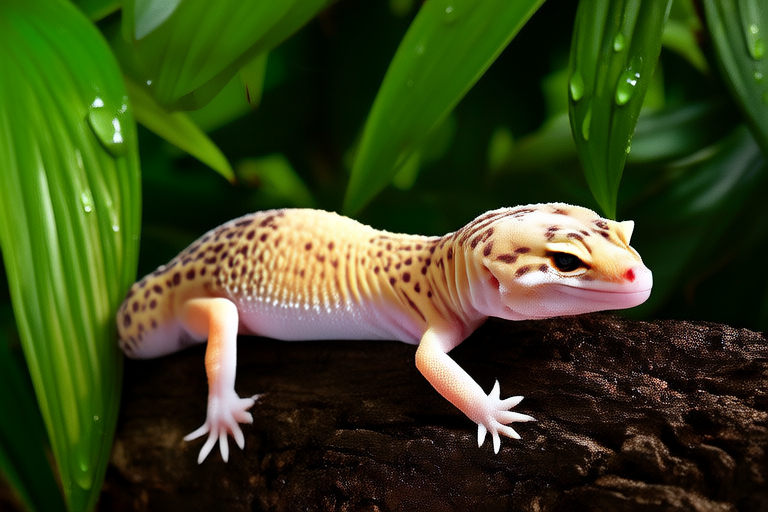How to Care for Your Chameleon: Expert Tips Revealed
Introduction: Chameleons are fascinating reptiles that require specific care to thrive in captivity. Unlike other pets, chameleons have unique needs that must be met to ensure their health and happiness. Their natural habitat is tropical and subtropical regions, where they live in trees and bushes. Therefore, it’s crucial to mimic these conditions as closely as possible when caring for them at home.
Proper Housing
Creating a suitable environment for your chameleon involves understanding their natural habitat. A vertical enclosure is ideal, providing ample space for climbing. The cage should be at least 24 inches wide, 36 inches deep, and 48 inches tall for a single adult chameleon. Use non-toxic, nontoxic branches and vines for climbing. Avoid using sand or gravel substrate; instead, opt for paper towels or reptile carpet for easier cleaning. Ensure the cage has good ventilation to prevent the buildup of harmful bacteria and mold.
Temperature and Lighting Requirements
Chameleons are ectothermic, meaning they rely on external sources for body heat. Maintain a temperature gradient within the enclosure, with a basking spot reaching 90-100°F (32-38°C) and cooler areas around 70-75°F (21-24°C). Use a high-quality thermometer to monitor these temperatures. Full-spectrum UVB lighting is essential for calcium absorption and overall health. Replace bulbs every six months to ensure effectiveness. Provide 10-12 hours of light daily, simulating natural day and night cycles.
Diet Specifics
Chameleons are insectivores, primarily eating insects like crickets, dubia roaches, and mealworms. Offer a variety of prey items to ensure a balanced diet. Dust food with calcium and multivitamin supplements twice weekly. Gut-load insects by feeding them nutritious foods before offering them to your chameleon. Feed adults two to three times a week, ensuring they consume enough nutrients for growth and maintenance.
Hydration Methods
Chameleons obtain most of their water through misting and dew on leaves. Mist the enclosure twice daily, creating droplets on foliage for easy access. Consider purchasing a drip system or automatic mister to provide consistent hydration. Monitor humidity levels, aiming for 40-60% relative humidity. Offering a shallow dish of clean water can help maintain hydration but is not sufficient alone.
Handling Techniques
Handle your chameleon gently and infrequently to minimize stress. Support their body fully, avoiding squeezing or pinching. Place them in a secure position on your hand or arm. Limit handling to necessary tasks, such as cleaning the enclosure or transporting the chameleon to the vet. Always wash hands before and after handling to prevent the spread of germs.
Common Health Issues
Metabolic bone disease (MBD) is prevalent among chameleons due to insufficient calcium intake. Signs include lethargy, swollen limbs, and difficulty moving. Respiratory infections can occur from poor ventilation or excessive moisture. Symptoms include labored breathing, nasal discharge, and wheezing. Eye infections may develop from dirty enclosures or improper humidity levels. Regular vet checkups and prompt treatment are crucial for maintaining your chameleon’s health.
Choosing the Right Veterinarian
Select a veterinarian experienced with exotic pets, particularly chameleons. They should offer preventive care services, including annual exams, vaccinations, and parasite screenings. Establish a relationship with the vet early, allowing time for emergencies. Discuss any concerns or questions about your chameleon’s care during regular visits.
Ongoing Education Resources
Stay informed about chameleon care by joining online forums and social media groups dedicated to reptile enthusiasts. Attend local reptile expos and workshops to learn from experts and network with fellow owners. Read reputable books and articles on chameleon husbandry. Websites like ReptileChannel.com and books like ‘The Chameleon Handbook’ by Philippe de Vosjoli provide valuable information. Regularly update your knowledge to adapt to new research and best practices in chameleon care.
